Lance Corporal Charles Wesley Hutchinson - A Brave Queenslander
By JOL Admin | 16 March 2016
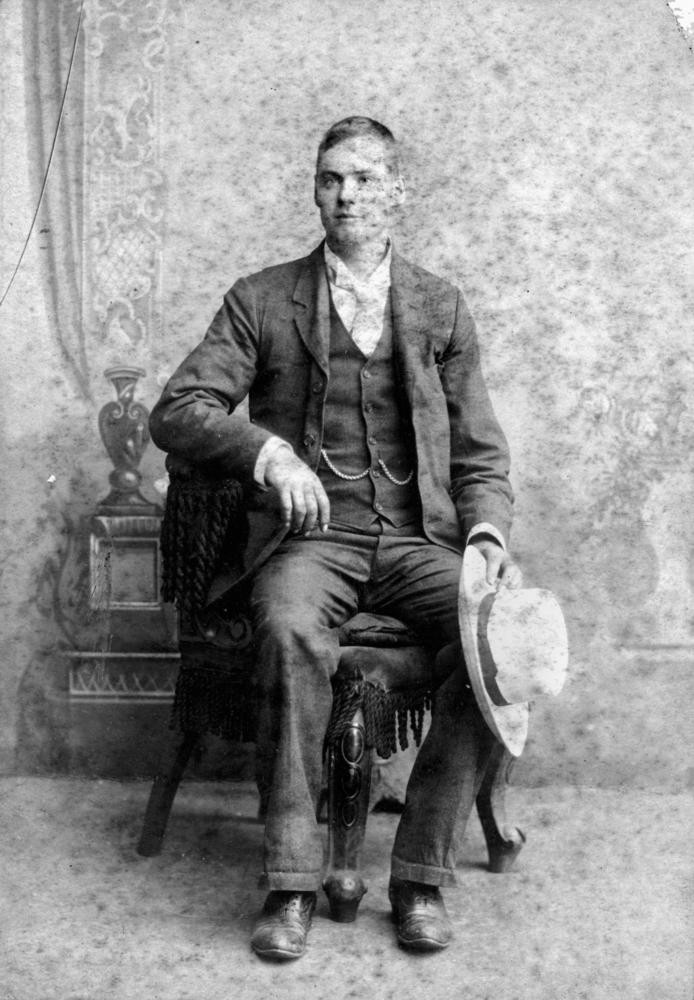
Charles Wesley Hutchinson, ca. 1905. John Oxley Library, Negative No. 195511
A war-related family collection held in the John Oxley Library is the Hutchinson Family Papers 1916-1944, Accession No. 29463. The collection includes two World War I embroidered silk postcards which were bought by Charles Wesley Hutchinson during his military service and sent home to his family in Duleen on the Darling Downs.
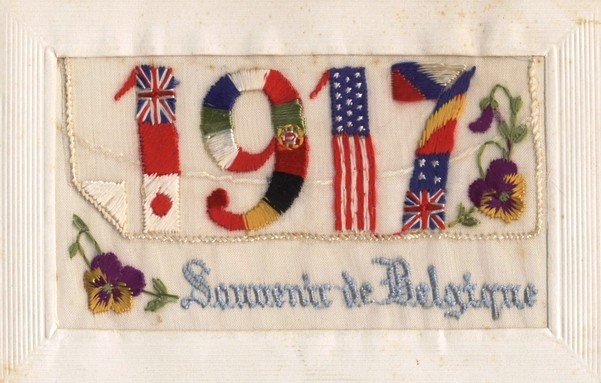
These beautiful silk postcards were common souvenirs during the war and were often sent back home to loved ones. They were initially hand embroidered by French and Belgian women and girls, working in their own homes, to sell to the soldiers serving on the Western Front. However as demand increased for these lovely mementos production moved to Parisian factories where they could be created on a larger scale.
Charles Wesley Hutchinson (service no. 4518) was an unmarried 30 year old labourer from Duleen, via Dalby, in Queensland, when he enlisted on the 15th September 1915, in the 15th Australian Infantry Battalion. Charles was the son of William and Sarah Hutchinson and came from a large family, having three brothers and two sisters living at the time of his enlistment. Three other siblings had died in infancy, and Charles was the only one of the boys to enlist. His father, William Hutchinson, died of heart disease in August 1916 while Charles was at the front.
Charles' unit embarked from Brisbane on the HMAT A62 Wandilla on the 31st January 1916 and served in Egypt and on the Western Front. He joined the 15th Battalion in Serapeum, Egypt, on the 2nd June 1916 and arrived in France on 8th June of that year. At the end of June he was transferred to the 4th Australian Light Trench Mortar Battery.
Charles was wounded in action three times during the war. His first injury was a shrapnel wound to the left cheek on the 29th August 1916 during the battle of Moquet Farm in France. At the time his battery was supporting the 16th Australian Infantry Battalion which suffered severe casualties in the engagement. It must have only being a slight wound as he was discharged to duty the next day.
He was wounded in action for the second time on the 1st February, 1917, near Grandcourt, France, when there was a strong enemy attempt to rush the British trenches. Charles suffered shrapnel wounds to his arm and leg and a gunshot wound to his wrist and left hand. After being admitted to the 9th General Hospital at Rouen, France, he was evacuated to England on the 23rd February and sent to the Bath War Hospital for treatment and recovery. Charles returned to France in late May 1917 and on the 16th June re-joined his unit in Belgium. On the 12th September of that year he was promoted to Lance Corporal.
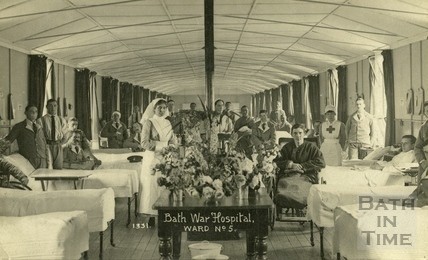
Bath War Hospital, England. Source: Bath in Time: Images of Bath Online.
The Battle of Polygon Wood on the 26th September 1917, near Zonnebeke, Belgium, was a major success for the allied troops and a defining moment in the military career of Charles Hutchinson. It was during this battle that he displayed great courage and was subsequently awarded the Military Medal, and in which he was severely wounded himself.
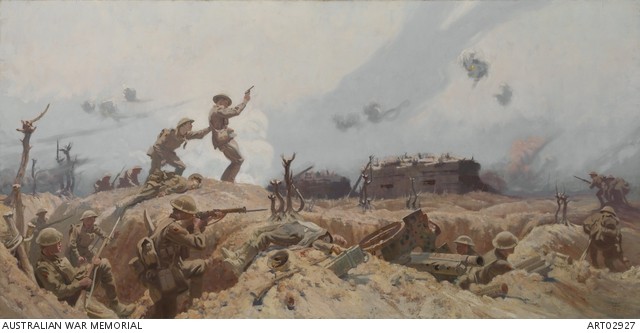
Painting by Fred Leist of the Australian Infantry attack at Polygon Wood, featuring a German reinforced concrete blockhouse, known as a 'Pillbox'. Australian War Memorial, ID No. ART02927.
The Battle of Polygon Wood was a well-planned attack, supported by large volumes of artillery to support the infantry advance. War historian, Charles Bean, described the encounter as a "clean strong blow" and attributed its success to the "most perfect barrage that had ever protected Australian troops" rolling ahead of the infantry like a "Gippsland bushfire" (Bean, C.E.W., The Official History of Australia in the War of 1914-1918, Volume IV, p.813).
The war diary of the 4th Australian Light Trench Mortar Battery briefly describes the battle "26th September. Bombardment 5.50 a.m. All objectives gained. Good targets. 3 killed, 13 wounded, award 1 M.M. ".
The entry regarding Charles being awarded the Military Medal in the Commonwealth Gazette, No. 31, 3 May 1918, reads thus:
For conspicuous gallantry and good work during operations near ZONNEBEKE on morning of 26th September, 1917. Lance Corporal HUTCHINSON brought a trench mortar into action in front line under direct machine gun and rifle fire and effectively engaged a Pill Box which was giving trouble. During the relief his gun crew were caught in a heavy barrage and one man severely wounded. Lance Corporal HUTCHINSON guided his party to safety, returned through the barrage, and while carrying the wounded man to safety was severely wounded himself.
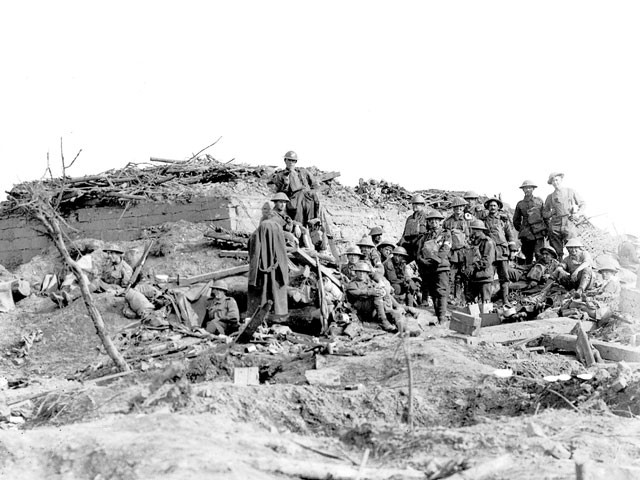
A German Pillbox captured by Australian troops during the Battle of Polygon Wood, 26 September 1917. Australian War Memorial, ID No. E00904
During this action Charles suffered a shrapnel wound to his face and shell shock. After being treated at the 54th General Hospital in Boulougne and at various convalescent hospitals in France, Charles was transferred to England in December 1917 and returned to Australia on the troopship, Balmoral Castle, in February 1918.
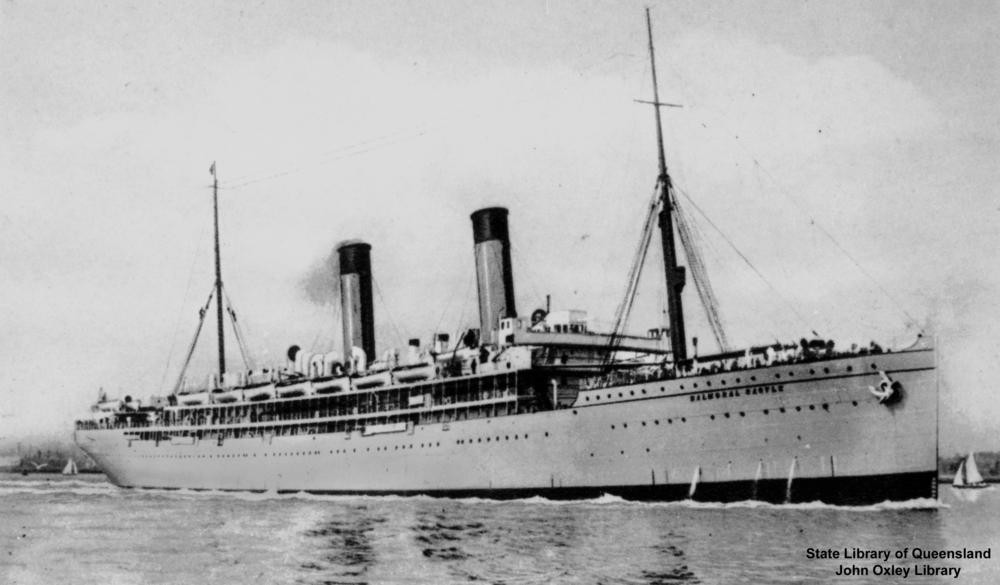
Balmoral Castle. John Oxley Library, Negative No. 128533.
After the war Charles returned to the Darling Downs area, farming at Duleen and Jondaryan. He does not appear to have married and died on the 13th May 1962. He is buried in the Dalby Cemetery.
The Hutchinson Family Papers, Accession No. 29463, may be viewed at the John Oxley Library. The 1917 embroidered silk postcard is currently being digitised.
Lynn Meyers, QANZAC100 Content Curator
Comments
Your email address will not be published.
We welcome relevant, respectful comments.